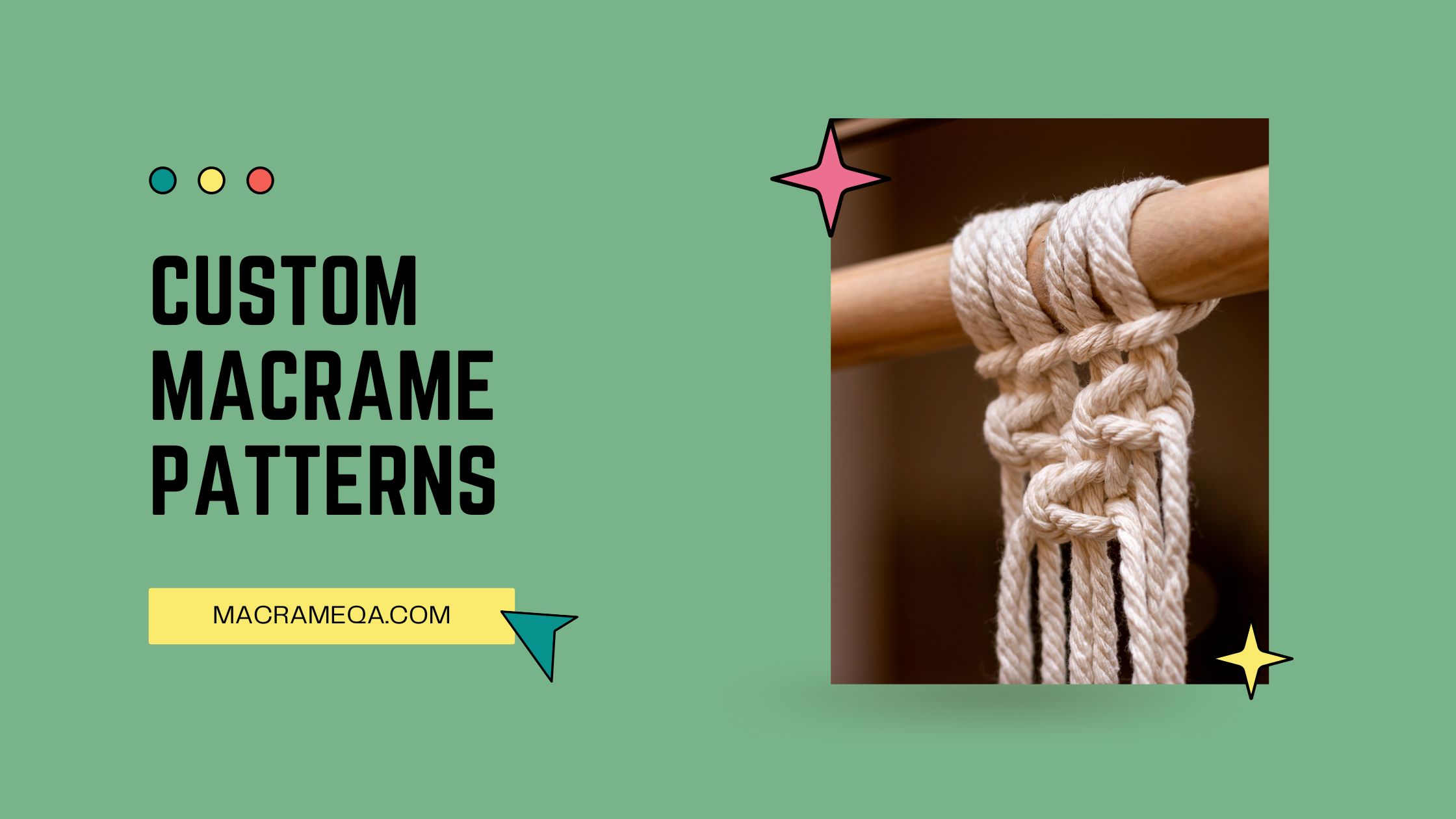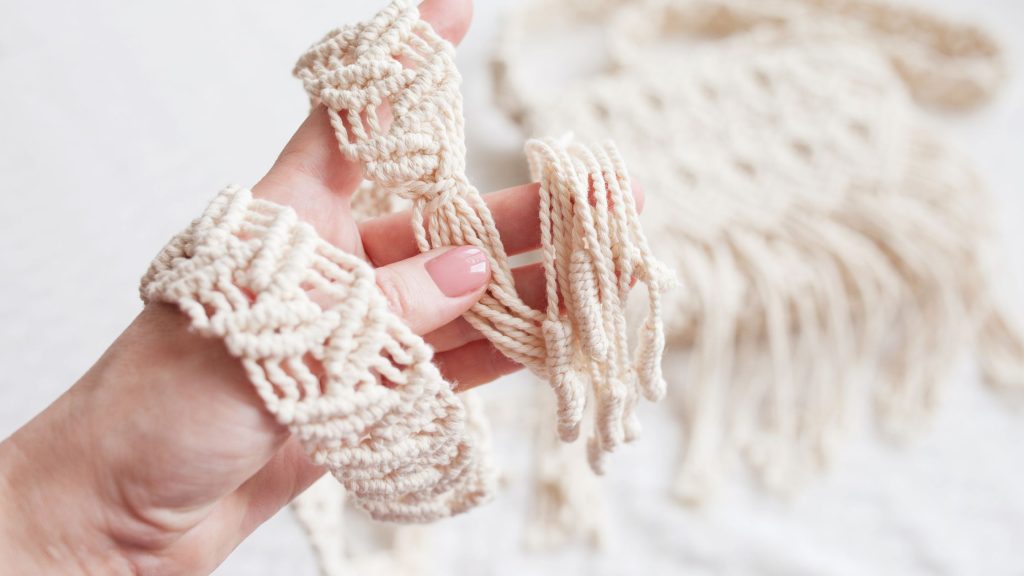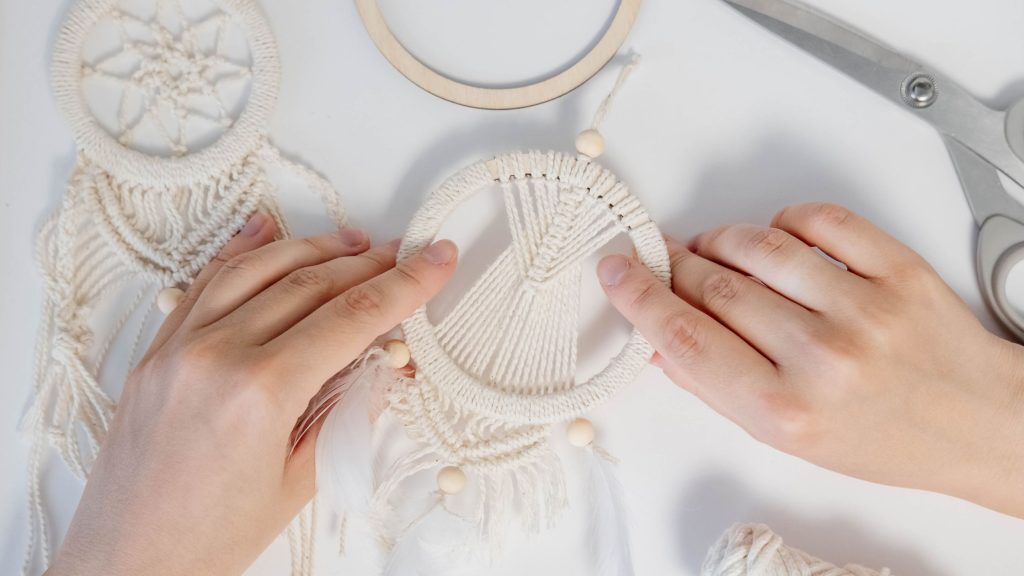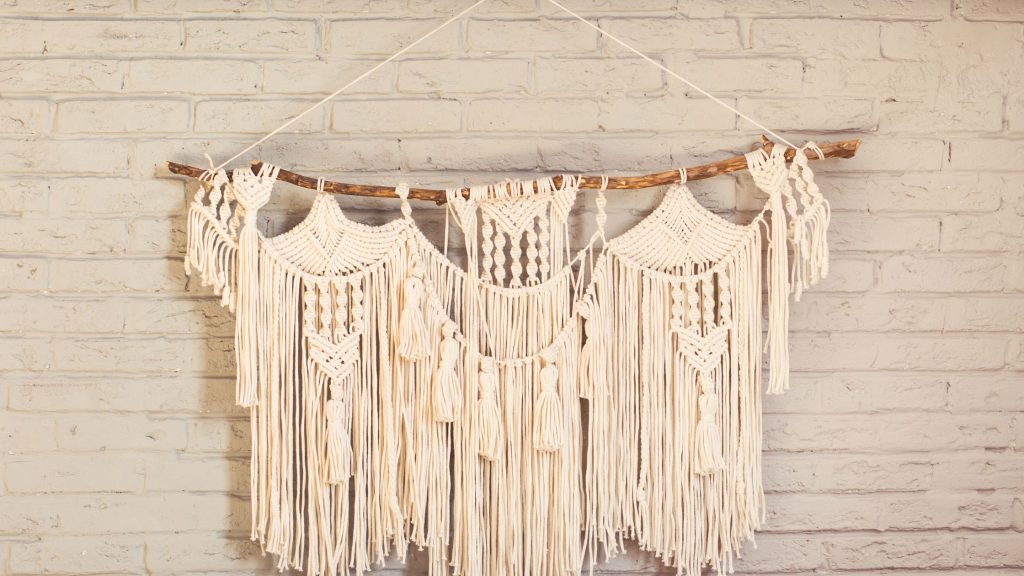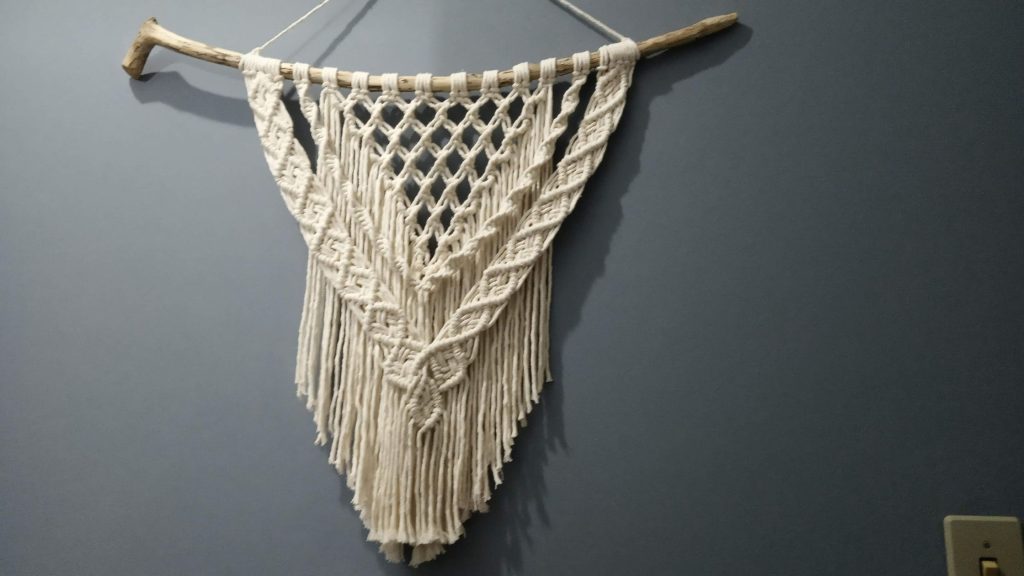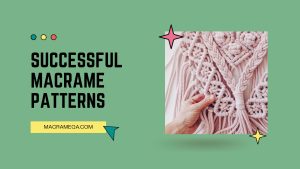Macrame is a beautiful and versatile craft that allows you to create intricate and decorative patterns using knots. If you’ve ever admired macrame designs and wondered how to create your own unique patterns, then you’ve come to the right place! In this article, we will explore the process of creating custom macrame patterns, from selecting the right materials to experimenting with different knot combinations. So grab your favorite cords and get ready to unleash your creativity in the world of macrame!
Understanding Macrame Patterns
What are macrame patterns?
Macrame patterns refer to the intricate designs and arrangements of knots used to create decorative items or accessories using cords or ropes. These patterns are created through the interweaving and overlapping of various types of knots to form unique and visually appealing designs. Macrame patterns can range from simple and basic designs to complex and intricate ones, allowing individuals to express their creativity and showcase their artistic skills.
Why create custom macrame patterns?
Creating custom macrame patterns provides you with the opportunity to design unique and one-of-a-kind pieces that reflect your personal style and taste. It allows you to explore your creativity and express your individuality through the choice of colors, materials, and knot combinations. By designing your own patterns, you have the freedom to tailor the design to your specific needs and preferences. Custom macrame patterns also enable you to create personalized gifts for your loved ones or even start a macrame business of your own.
Essential tools for creating macrame patterns
Before diving into creating custom macrame patterns, it’s essential to have the right tools at your disposal. The basic tools for macrame include:
- Macrame cords or ropes: Choose cords of various thicknesses and materials, such as cotton or jute, depending on the desired project.
- Scissors: A sharp pair of scissors is necessary for cutting the cords neatly and precisely.
- Macrame board or workspace: A dedicated workspace or a macrame board helps keep the cords organized and prevents tangling.
- Measuring tape: Accurate measurements are crucial for determining the size and shape of your macrame project.
- Tapestry needle: A tapestry needle is handy for weaving loose cords and for adding finishing touches to your macrame design.
- Hanging rod or dowel: This is needed for hanging and displaying your finished macrame piece.
By having these essential tools on hand, you’ll be ready to embark on the journey of creating your very own macrame patterns.
Gathering Inspiration
Exploring existing macrame patterns
One of the best ways to get started with creating your own custom macrame patterns is by exploring and studying existing patterns. Look for macrame books, magazines, and online resources that feature a wide variety of designs. Analyze the different knot combinations, color choices, and overall compositions of these patterns to gain inspiration and insight into what appeals to you.
Utilizing online resources
The internet is a treasure trove of inspiration for macrame enthusiasts. There are numerous websites, blogs, and social media platforms dedicated to macrame designs and patterns. Explore platforms like Pinterest and Instagram to discover a vast array of macrame patterns shared by fellow crafters and artists. These online resources not only provide inspiration but also offer tutorials and tips from experienced macrame artists.
Finding inspiration in nature and everyday objects
Nature and everyday objects can serve as excellent sources of inspiration for custom macrame patterns. Look to your surroundings for shapes, colors, and textures that catch your eye. Leaves, flowers, shells, or even architecture can all provide inspiration for unique macrame designs. Take pictures or sketch these inspirations as a reference for your pattern creation process.
Designing Your Custom Macrame Pattern
Determining the purpose of your project
Before diving into designing your custom macrame pattern, it’s crucial to determine the purpose of your project. Are you creating a wall hanging, a plant hanger, or a bracelet? Knowing the purpose will help guide your design choices, ensuring that the pattern not only looks visually appealing but also serves its intended function.
Choosing the desired size and shape
Next, consider the desired size and shape of your macrame piece. Determine the dimensions based on where you plan to display or use it. For example, if you’re designing a wall hanging, take into account the dimensions of the wall space where it will be hung. Sketch out different shapes and sizes to see what complements your intended space or body part.
Selecting materials and colors
The choice of materials and colors plays a significant role in the overall aesthetic of your macrame pattern. Consider the mood and atmosphere you want to create with your design. Select cords or ropes that complement each other and the intended purpose of your project. Experiment with different colors to find combinations that are visually pleasing and evoke the desired emotions.
Sketching your design idea
Once you have a clear vision of the purpose, size, shape, materials, and colors for your custom macrame pattern, it’s time to sketch your design idea. Use paper or a sketching app to draw out the overall composition and placement of knots. This sketch will serve as a blueprint during the knotting process and help you visualize the final piece.
Understanding Knots and Techniques
Learning basic macrame knots
To create macrame patterns, it’s essential to familiarize yourself with basic macrame knots. Start by learning foundational knots like the square knot, the spiral knot, and the half-hitch knot. Practice these knots repeatedly until you feel comfortable and confident in your execution. Understanding the basic knots will provide a strong foundation for creating more complex patterns.
Exploring advanced knot combinations
Once you’ve mastered the basic macrame knots, it’s time to explore advanced knot combinations. Experiment with combining different knots to create unique textures and patterns. Try incorporating knots like the double half-hitch, the Josephine knot, or the lark’s head knot into your designs. The possibilities are endless when it comes to combining knots, so let your creativity run wild.
Experimenting with various techniques
In addition to different knot combinations, macrame offers a range of techniques that can elevate your custom patterns. Explore techniques like fringing, tassel-making, or incorporating beads and shells into your designs. These techniques add depth and character to your macrame patterns, allowing you to create truly unique and eye-catching pieces.
Mapping out the Pattern
Creating a grid or pattern diagram
A crucial step in creating a custom macrame pattern is mapping out the design on a grid or pattern diagram. This visual representation helps you stay organized and allows for easier execution of the pattern. Use graph paper or digital design software to create a grid where each square represents a specific knot or section of the pattern.
Establishing the placement of knots
Once you have your grid or pattern diagram set up, determine the placement of knots within the design. This requires careful consideration of how different knots and techniques will come together to create the desired pattern. Experiment with different arrangements and placements to achieve the desired visual impact.
Assigning different knot types to areas
To add complexity and visual interest to your custom macrame pattern, consider assigning different knot types to various areas of the design. This helps create contrast and variation within the pattern, making it more visually appealing. By strategically placing different knots, you can guide the viewer’s eye and create focal points within the overall composition.
Testing and Adjusting
Creating a small sample
Before committing to your full-scale custom macrame pattern, it’s essential to create a small sample or prototype. This allows you to test your design, experiment with different knot tensions, and identify any potential issues or adjustments needed. Use leftover cords or inexpensive materials to create a miniature version of your pattern and assess its visual appeal and structural integrity.
Evaluating the design and dimensions
Once you have your sample, evaluate the design and dimensions against your initial vision. Consider the overall aesthetics and whether the pattern aligns with your intended purpose. Assess the proportions and dimensions to ensure they are visually pleasing and functional for the intended use. Make note of any areas that may need improvement or adjustment.
Making necessary adjustments to the pattern
Based on your evaluation, make necessary adjustments to your custom macrame pattern. This may involve tweaking the placement of knots, altering the arrangement of colors, or refining the overall composition. Be open to experimentation and don’t be afraid to make changes to achieve the desired result. Remember, the process of creating custom patterns is iterative, and adjustments are a natural part of the creative journey.
Documenting Your Custom Pattern
Taking clear photographs
Documenting your custom macrame pattern is essential for reference and sharing purposes. Take clear, well-lit photographs of your finished piece from various angles to capture the intricacies of the pattern. This documentation serves as a record of your design and can be used for self-reflection, showcasing your work, or even creating tutorials in the future.
Creating step-by-step instructions
To share your custom pattern with others, the creation of step-by-step instructions is crucial. Break down the process into manageable steps, clearly explaining each knot and technique used. Use photographs or illustrations to accompany the written instructions, providing visual guidance for those following the pattern. Thorough and easy-to-follow instructions ensure that your custom pattern can be replicated by others.
Keeping a digital or physical archive of patterns
As you continue to create custom macrame patterns, it’s important to keep a digital or physical archive of your designs. Organize your patterns in a way that makes them easily accessible and retrievable. Create folders or binders to categorize your patterns based on the type of project, techniques used, or specific themes. This archive not only showcases your creative journey but also serves as a reference for future projects.
Sharing and Collaborating
Joining macrame communities and forums
Sharing your custom macrame patterns with like-minded individuals can be both inspiring and rewarding. Join macrame communities and forums online or in your local area to connect with fellow macrame enthusiasts. Share your designs and seek feedback and advice from others. Engaging with a community of fellow crafters can provide valuable insights and foster collaboration on new and exciting projects.
Participating in workshops and classes
Expand your macrame skills and network by participating in workshops and classes. These opportunities allow you to learn from experienced macrame artists and gain new perspectives on design and technique. Workshops and classes also provide a platform for sharing your custom patterns with fellow attendees and receiving feedback. Collaborations and friendships formed in these settings can lead to exciting creative possibilities.
Collaborating with other macrame enthusiasts
Consider collaborating with other macrame enthusiasts to create unique and joint projects. Collaborations offer an opportunity to combine different styles, techniques, and ideas, resulting in innovative designs. Collaborating with others can also provide a support system for sharing resources, exchanging knowledge, and challenging each other creatively.
Protecting Your Custom Patterns
Understanding copyright laws
When it comes to protecting your custom macrame patterns, it’s important to understand copyright laws. Copyright gives you exclusive rights to your original design and prevents others from copying or reproducing your work without permission. Familiarize yourself with copyright laws in your country and consider registering your patterns with the appropriate authorities for added protection.
Exploring options for pattern licensing
If you’re open to sharing your macrame patterns while still retaining some control over their usage, consider exploring options for pattern licensing. Pattern licensing allows you to grant others the right to use your patterns for personal use, commercial use, or specific purposes in exchange for a fee or royalties. This approach enables you to protect and monetize your patterns while still allowing others to enjoy and create from your designs.
Watermarking and protecting digital files
When sharing your custom macrame patterns online, it’s important to protect your digital files from unauthorized use. Consider watermarking your photographs or digital files with your copyright information or logo. This helps deter unauthorized use of your patterns and ensures that you receive proper credit when your patterns are shared or reproduced.
Experimenting and Pushing Boundaries
Trying new knot combinations
As you gain confidence and experience in creating custom macrame patterns, don’t shy away from trying new knot combinations. Push the boundaries of traditional macrame and experiment with innovative knotting techniques. Incorporate less frequently used knots or create your own unique knot variations. By embracing experimentation, you can create truly original and captivating designs that set you apart as a macrame artist.
Incorporating unconventional materials
Expand your creative horizons by incorporating unconventional materials into your macrame patterns. Think outside the box and consider using materials such as wire, fabric strips, or recycled materials in your designs. Incorporating unconventional materials adds an element of surprise and allows you to create truly unique and visually intriguing pieces.
Creating unique and innovative designs
Ultimately, creating custom macrame patterns is about pushing the boundaries of your creativity and creating unique and innovative designs. Allow your imagination to run wild and challenge yourself to create patterns that are truly one-of-a-kind. Explore different textures, experiment with color combinations, and find inspiration from unexpected sources. By thinking outside the box, you can push the boundaries of macrame and create patterns that truly reflect your artistic vision.
Conclusion
In conclusion, creating custom macrame patterns is a deeply fulfilling and rewarding artistic pursuit. From understanding the basics of macrame to exploring advanced techniques, mapping out patterns, and protecting your designs, there are numerous steps and considerations involved. By following these guidelines and allowing your creativity to flourish, you can create custom macrame patterns that are truly unique and reflective of your personal style. So, grab your cords, tools, and inspiration, and embark on an exciting journey of designing and knotting your own macrame masterpieces.

